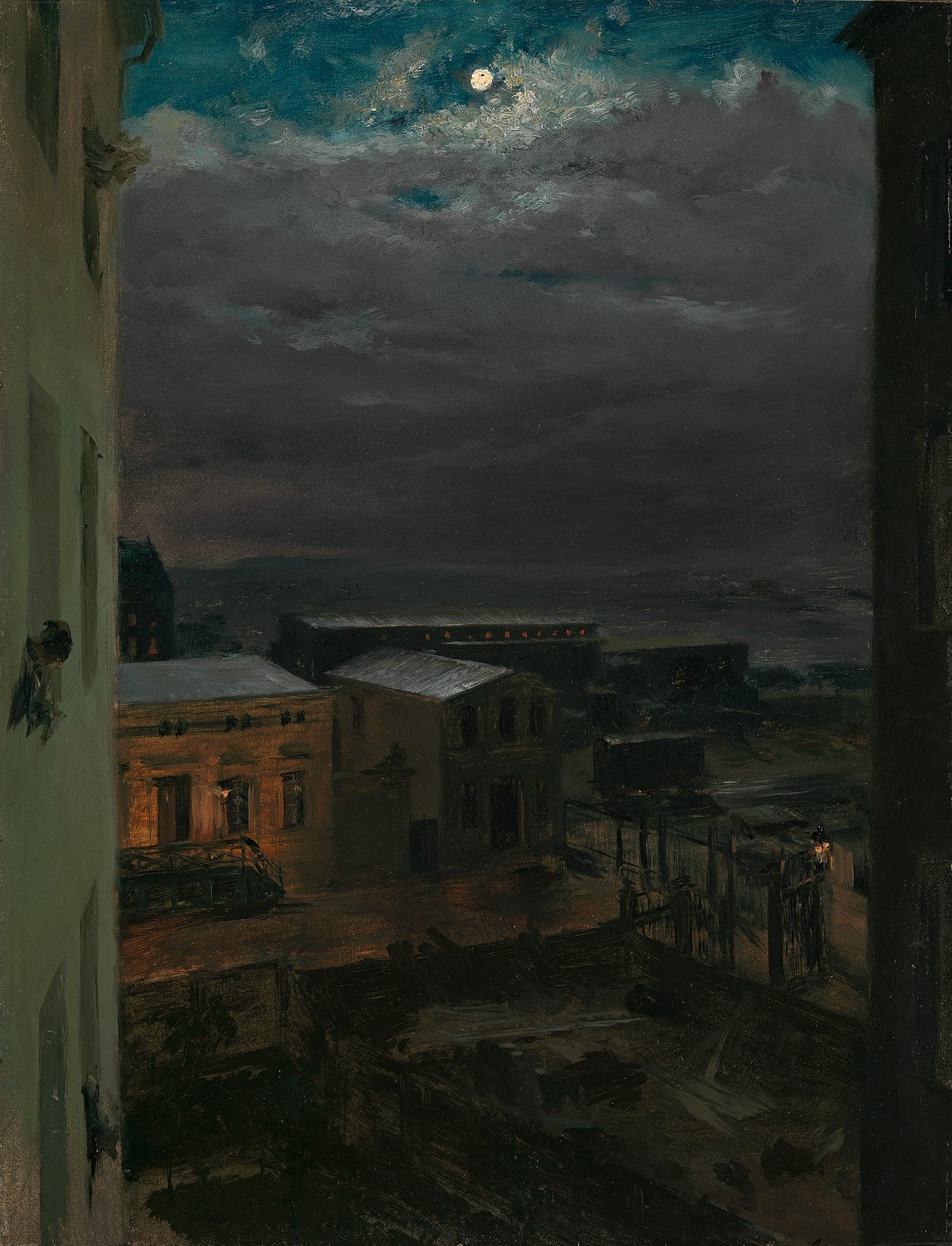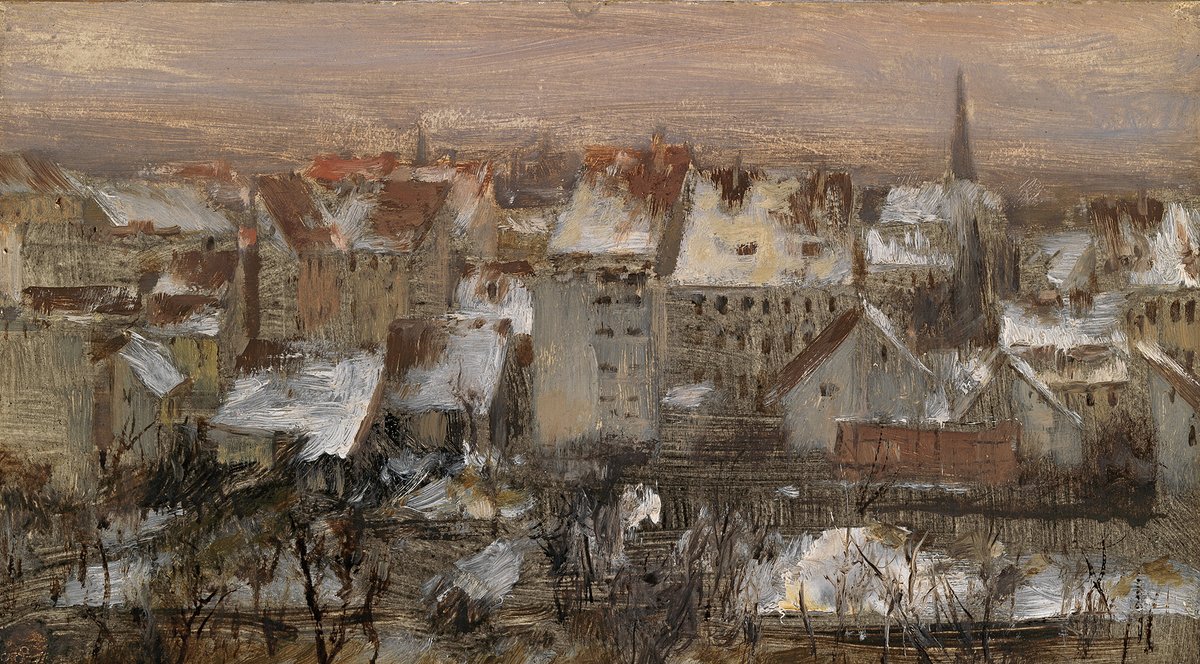Adolph von Menzel
The Anhalter Railway Station by Moonlight, around 1846

Adolph von Menzel
The Anhalter Railway Station by Moonlight, um 1846
Kunst Museum Winterthur, Stiftung Oskar Reinhart, Ankauf, 1932
Foto: SIK-ISEA, Zürich (Philipp Hitz)
Together with his parents and siblings Adolph Menzel moved to Berlin in 1830. Shortly afterwards, he had to take over his father’s lithographic workshop. The 17-year-old Menzel showed a lot of talent and quickly became the noteworthy painter of Frederick the Great. As a sharp observer he captured the rapidly growing metropole Berlin in his paintings whilst focussing on daily and uneventful things.
This new perspective on the city is expressed particularly in Menzel’s small-format paintings, the intimate oil studies of the 1840s. Upon his own request, these works came to light only after his death. The railway between Berlin and Potsdam, brought into service in 1838, was a popular motif. In this painting, the railway station does not appear as a representative building, but rather as a desolate construction site shown from an unpretentious rear viewpoint.
With his Biedermeier view through the window upon the industrial motif, Menzel characterises the industrial era as a revolution and a threat. This is also emphasised by the morbid nocturnal mood and the dramatic, romantic staging of light and shadows.

Adolph von Menzel
Berlin Rear Buildings in the Snow, 1847/1848
Kunst Museum Winterthur, Stiftung Oskar Reinhart, Ankauf, 1938
Foto: SIK-ISEA, Zürich (Philipp Hitz)
Also, Menzel’s depiction of Berlin Rear Buildings in the Snow is distinguished by its pictorial effect and for taking a step back from the motif in favour of the artistic execution, thus anticipating many stylistic features of impressionism.


